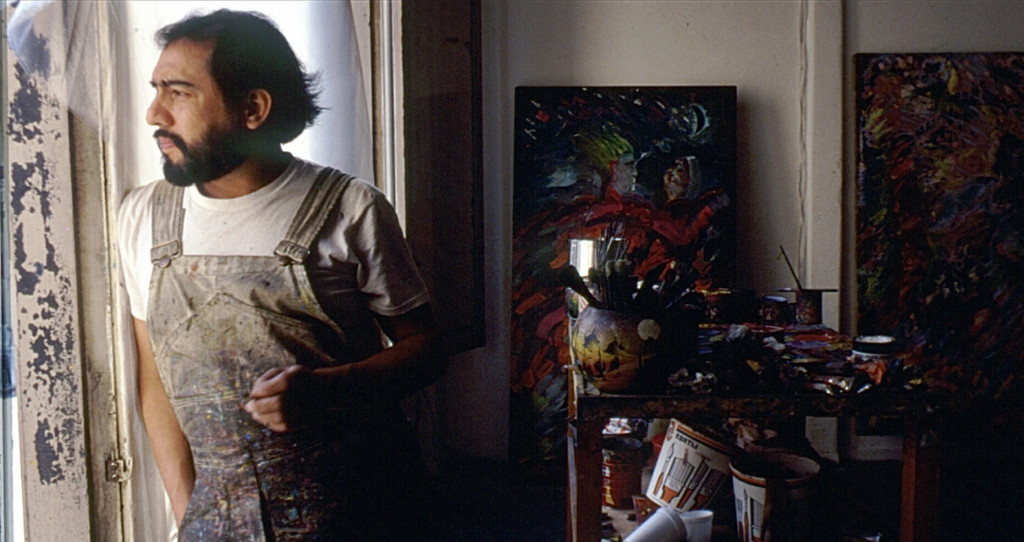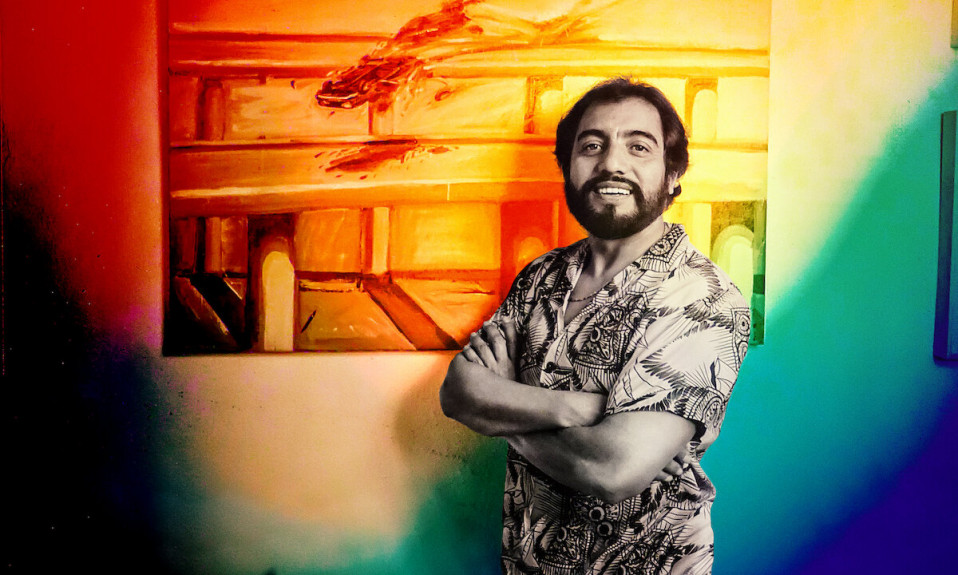One of the worst aspects of the current crop of documentaries is that since they are produced by the people who are the subjects of the pictures themselves or their relatives, they end up becoming embellished pieces of propaganda, which is not the case for the sincere Carlos Almaraz: Playing With Fire (2019), a documentary on the late Mexican-American painter on Netflix and directed and produced by Almaraz’s widow Elsa Flores Almaraz having as co-director Richard Montoya.
Carlos and Elsa are pioneers of the Chicano Art Movement, a groundbreaking period in artistic life in the United States of America that started in the 1960s and saw Mexican Americans questioning through their painting and other art forms their place within a society that was living the days of the Civil Rights Movement struggling with the establishment that values some Americans over others while denying minorities not only their citizenship but their very own humanity.
The Chicano Art Movement was influenced by the Chicano Movement (El Movimiento) and brought vanguard ideas that gained traction in the aftermath of the Mexican Revolution, amalgamating with pre-Columbian art and European painting techniques and all infused with Mexican American social, political, and cultural struggles. Those were the days that Mexican Americans and Latinos were dealing with the gut punch that was the death of the Campesino leader César Chávez, who fought for better conditions for Mexican American workers. Arguably, the most accomplished artist from that movement is Carlos Almaraz.
Almaraz’s paintings document the daily struggles of being a Chicano in Los Angeles that is boiling with racial issues because, different from what many know, the Blacks weren’t the only ones affected by the White Anglo-Saxon American way of life that marginalized other lives and narratives.
The documentary shows with accuracy how the era from which Almaraz came played a role in his formation as an artist and human being, which can be seen in the subject of his works like the series of freeway crashes displaying how fiery and nihilistic can be the ending of those living in L.A., in particular its Latino population that to this day is still represented as material for manual labour in many mediatic depictions.

It is one of the trump cards for this documentary as many are not acquainted with the Latino reality in the U.S. It also further shows how complicated the relations between these Chicano artists could be that some ended in animosity, thus making this documentary a grounded work.
‘Playing with Fire‘ also goes the distance by highlighting Almaraz’s queer identity and experiences for today’s world, considering that the LGBTQIA+ community has been suffering from prejudice and backlash, as seen with the rise of extremist forces in society while at the same time, it avoids the clichés from the lower side of identitarian politics. The movie gives a scope on how complex Almaraz was, which furthers the experience of understanding his art as seen in the 1980’ painting ‘Devilish Passion’ where a human and a demon are depicted fellating one another.
One of the best parts is approaching his creative method and his studio; only some people outside the art world and the media comprehend how artists work and the demands it takes on their minds and bodies to the point that many see art as a hobby. These scenes, combined with the background given by the doc and the insights on his persona, help the viewer come closer to understanding his paintings and their meaning that, after decades, are still current.
By having the actor Edward James Olmos doing the narration, Playing With Fire adds gravitas to the final product as the Oscar-nominated actor and activist is a patriarchal figure to Latinos and, in many ways, represents the best these incredible part of American society has to offer, if the cinema community were apprehensive about diversity, it would treat Olmos with the same deference designated to Robert De Niro and Al Pacino.
The editing is also a strength of this picture, as its fluidity makes the subject even more engaging, thus attracting not only those contemporaries of Carlos and Elsa but younger generations as well. ‘Playing With Fire’ is a hidden treasure in the Netflix sandbox and one documentary that needs a physical copy in arts colleges across America and abroad.
Also Read: The Art of the “One Shot” Film














